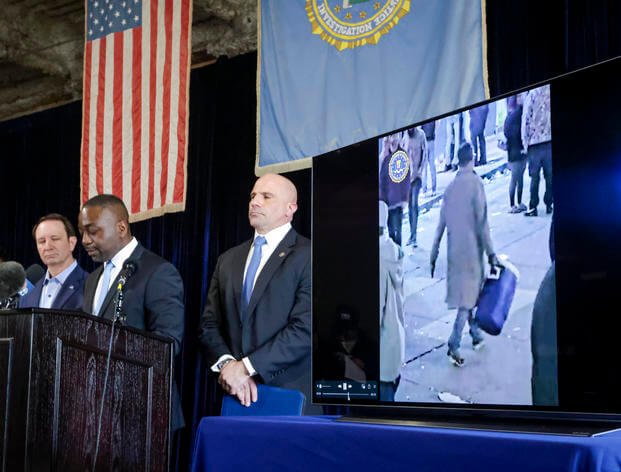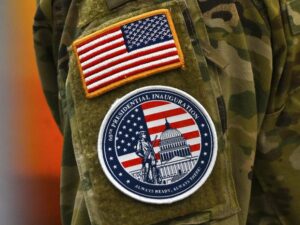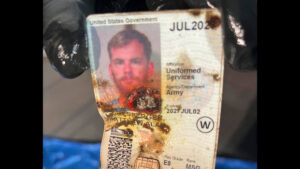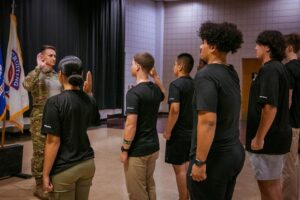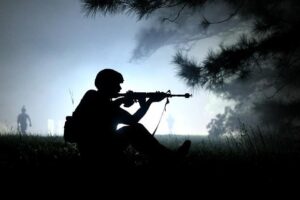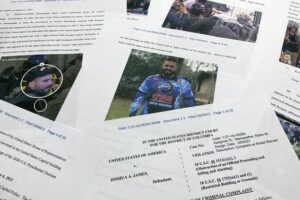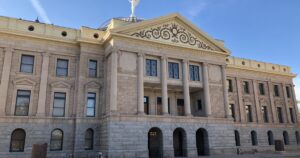In a shocking turn of events, New Orleans became the site of a tragic truck attack on New Year’s Day, claiming the lives of 14 individuals. Shamsud-Din Jabbar, the perpetrator, had visited the city twice before, capturing video footage of the French Quarter using Meta smart glasses, as revealed by an FBI official.
The FBI’s Deputy Assistant Director, Christopher Raia, shared during a news conference that Jabbar, a former U.S. Army soldier and U.S. citizen, was influenced by the Islamic State militant group. Before the attack, Jabbar had made trips to Cairo and Canada, though the connection of these visits to the attack remains uncertain.
Police intervened and fatally shot the 42-year-old Jabbar during a gun battle at the scene on Bourbon Street, a renowned destination in New Orleans.
Federal authorities currently believe that Jabbar acted independently, although investigations into his contacts are ongoing. “All investigative details and evidence that we have now still support that Jabbar acted alone here in New Orleans,” Raia stated. The search for potential associates inside and outside the United States continues.
FBI Uncovers Video Evidence of Attack Planning
FBI special agent Lyonel Myrthil disclosed that Jabbar had visited New Orleans in October and November prior to the attack. On October 31, he used Meta smart glasses to film the French Quarter, planning what Myrthil described as a “hideous attack.” Although Jabbar wore the glasses during the assault, they were not activated.
Meta, the parent company of Facebook, declined to comment on the matter when approached by The Associated Press.
The FBI released footage of Jabbar placing explosive devices in the French Quarter shortly before the attack. One of the devices, moved by an uninvolved individual, was found a block away.
Authorities also shared that Jabbar legally acquired a semiautomatic rifle in Arlington, Texas, from a private seller, a transaction described as a “chance encounter” by Joshua Jackson, New Orleans special agent in charge.
Enhanced Security Measures in Response to Attack
Following the tragic incident, New Orleans police have bolstered security by blocking traffic at key intersections such as Bourbon and Canal streets. This comes as the city prepares for significant events, including the first parade of the Carnival season and the Super Bowl.
New Orleans Mayor LaToya Cantrell expressed uncertainty regarding the effectiveness of new bollards being installed to prevent similar attacks, stating, “The thorough assessment that I am asking for will determine whether they are strong enough.” She has requested that Mardi Gras receive heightened security support from Homeland Security.
President Joe Biden, alongside First Lady Jill Biden, is set to visit New Orleans to offer condolences to those affected by the incident. Biden remarked, “I’ve been there. There’s nothing you can really say to somebody that’s just had such a tragic loss, my message is going to be personal if I get to get them alone.”
Officials recovered Jabbar’s explosive devices undetonated, crediting the swift response of New Orleans police for preventing further tragedy. Bomb-making materials found at Jabbar’s home included RDX, a chemical compound commonly available in the U.S., and further testing is underway.
Jabbar attempted to set fire to his rental property, although the flames died out before the fire service arrived.
Threat of Homegrown Terrorism Highlighted
Hours before the attack, Jabbar posted online videos expressing support for the Islamic State militant group. This incident marks the deadliest IS-inspired attack on U.S. soil in recent years, underscoring concerns about a resurgence of international terrorism.
Homeland Security Secretary Alejandro Mayorkas emphasized the growing threat of homegrown violent extremism, noting a “significant increase” in recent years.
The attack has spurred heightened security measures across the country. For example, military officials at Camp Pendleton in California have announced tighter access controls, including ID checks and random inspections, in response to the increased threat level.

